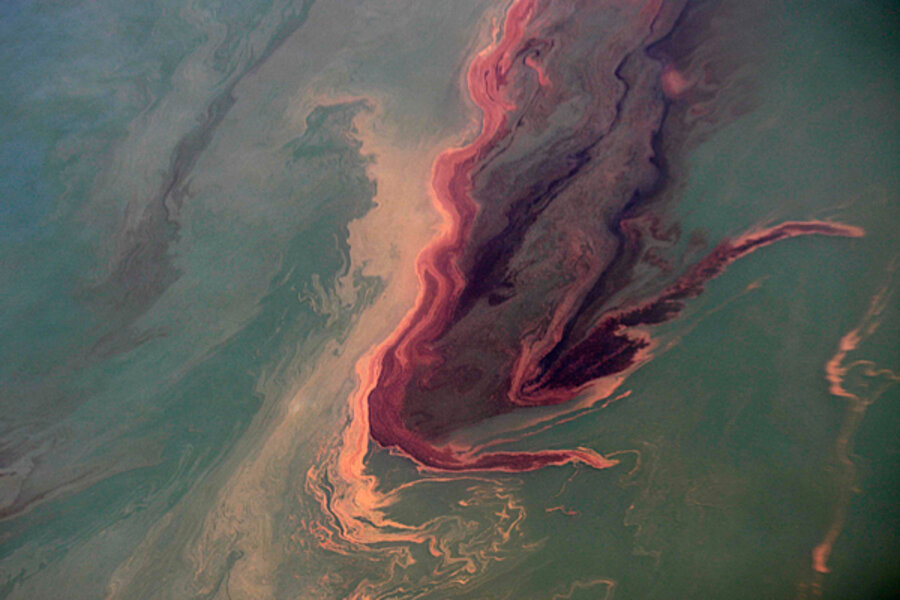Oil spill could be Gulf's biggest ever, new flow estimate suggests
Loading...
BP's Deepwater Horizon blowout is spewing between 35,000 and 60,000 barrels a day, with up to 18,000 barrels currently being captured, according to a fresh estimate released this afternoon by the National Incident Command's flow-rate technical group.
The new number is a revision – and a significant increase – of the estimate released last week, which pegged the flow rate at 20,000 to 40,000 barrels (840,000 to 1.68 million gallons) a day.
If the new estimate represents how much oil has been spewing from the well since the April 20 blowout, then the Gulf oil spill is in a position to eclipse the 1979 Ixtoc blowout as the region's worst offshore oil spill. By these new figures, the Deepwater Horizon blowout might have pumped as much as 2.7 million barrels into the Gulf. The Ixtoc blowout released some 3 million barrels of oil over the 10 months it took to cap it.
IN PICTURES: The Gulf oil spill's impact on nature
The upper end of the new daily estimate carries the biggest uncertainty, according to US Energy Secretary Steven Chu. "As we continue to collect additional data and refine these estimates, it is important to realize that the numbers can change," he said in a prepared statement.
Fifth revision
The new estimate marks the fifth upward revision in flow assessments since the blowout occurred April 20. The revisions has risen steadily from 1,000 barrels a day to 5,000, then to a range of 12,000 to 19,000, and at last to Friday's 20,000 to 40,000 figure.
A key reason for this revision: At the government's request, BP installed pressure sensors in the containment cap, which was installed two weeks ago. The sensors have given scientists a more direct measurement than they've had in the past.
Until now, teams within the flow-rate technical group had relied largely on high-resolution video and sonar-based measurements to gauge the flow rate from the well, as well as data from satellites and aircraft to take the measure of oil on the surface.
In addition, prior to the cap's installation nearly two weeks ago, oil was leaking from several holes in the riser pipe as well as from the open end. Researchers say this made it more difficult to estimate the flow, especially using video techniques.
Once the riser was cut to receive the cap, however, the oil had only one exit, making it somewhat easier to gauge.
The team also had a week's worth of data on the amount of oil the cap was capturing and sending to the Discoverer Enterprise, the surface ship that is collecting the oil.
How much oil in the Gulf?
If the new estimate is applied to the entire pre-cap period, the Deepwater Horizon blowout will have pumped as much as 2.6 million barrels of oil into the Gulf from April 20 until the cap was installed on June 4, with another 187,000 to 462,000 barrels added since the capping.
In releasing the new numbers today, federal officials noted that BP is getting set to install a new siphoning system that could increased the total amount of oil collected daily to about 50,000 barrels by the end of the month. The arrival of another tanker ship in mid-July could push that daily capture rate to between 60,000 and 80,000 barrels.
The ultimate goal is to finish drilling two relief wells, a process the international oil giant has said it hopes to complete by mid-August. A liquid more dense than oil will be pumped down through the relief wells and into the leaking well to stop the flow so the stricken well can be sealed.
IN PICTURES: The Gulf oil spill's impact on nature
Related:





